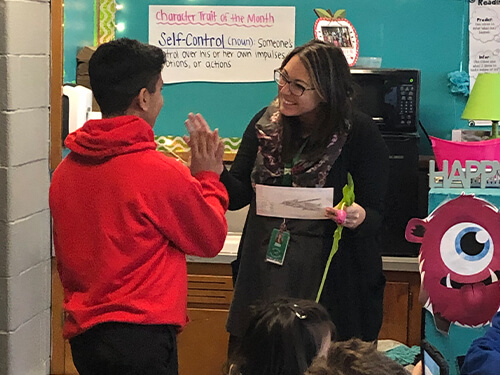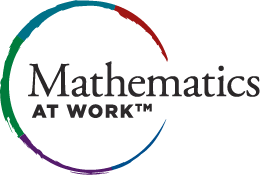DEMOGRAPHICS
Kenwood Elementary School is a Title 1 school within Jefferson County Public Schools in Louisville, Kentucky. It is ranked among the top 20 percent of public schools in the state for both diversity and students eligible for free and reduced lunch. There are more than 30 countries and 24 languages represented among the student population. “It’s a beautifully diverse place to be,” says Kenwood principal Jill Handley.
576 Students
- 85% Free and reduced lunch
- 44% English learners
- 11% Special education
Kenwood Elementary School's CHALLENGE
The year prior to partnering with Solution Tree, state test scores showed Kenwood Elementary mathematics proficiency to be near the lowest in the district at 18 percent. “This was such a devastating blow,” admits principal Jill Handley. “I consider myself to be an instructional leader. I know instruction and what should be going on, but what it really came down to is that we didn’t have the systems and structures in place to move achievement.”
When the opportunity arose for Kenwood to apply to be a pilot Professional Learning Communities at Work® school, Handley seized the chance. She knew her staff had what it took to tackle this work. “We already had common planning as part of our process, and most of us appreciated the idea of collaboration,” says Handley. Kenwood was selected as one of 13 schools in the district to work with Solution Tree.
IMPLEMENTATION
“One really great thing about working with Mona is that, even though we had a lot of work to do, she made it chunkable, giving us action steps to accomplish between our sessions with her. This allowed me to be in the boat with my teachers. It gave me the opportunity to hear this outside perspective and then lead and learn alongside my staff.”
A lot of heavy lifting happened that first year in working with Mathematics at Work™ associate Mona Toncheff. “That was probably the hardest our staff has ever worked, aside from teaching through a pandemic,” says Handley.
In the beginning, their common assessments tended to focus on DOK level one. Assessments were tied to a low expectation of the standard and not the rigor of it. “That is definitely not the case now,” observes Toncheff. Handley adds, “But since we had no common assessments prior, just that first step made a huge impact on student learning.”
In year two, Toncheff dug into instructional shift and conducted lesson studies with every team in the school. “It was eye-opening for staff to be in each other’s classrooms and observe how instructional choices like questioning and lesson design impacted student thinking” recalls Toncheff.
“By this time our thinking was shifting in two major ways,” Handley adds. “One, we no longer were focusing so much on what the teacher is doing but on what the students are learning and applying. Two, we were learning what true collaboration looks like. We truly understood how to collectively look at the data for all our kids and respond effectively.”
Year three focused on refining their work on assessments and instruction. Kenwood staff also realized the value in the intensive conversations they were having around math content. Over the course of three years, the staff had started to think about and discuss what good math instruction and proficiency look like and then apply that thinking.

When students are engaged, they succeed.

When students are engaged, they succeed.
RESULTS
After just one year of working with Toncheff and putting the basic tenets of Mathematics at Work in place, Kenwood doubled their overall mathematics proficiency. This significant, visible result motivated staff to keep going. By the end of year three, mathematics proficiency had risen to 50 percent from their starting point of 18 percent. This level of improvement earned Kenwood state recognition as one of 47 “bright spot” schools out of more than 1,000 applicants who showed higher than expected growth in mathematics achievement.
Other accolades include their status as the only school in Kentucky to be recognized as a National School of Character. Prior to the pandemic, Kenwood also boasted one of the top MAP growth indices out of all Title I schools in Jefferson County Public Schools across all subgroups. In addition, Kenwood Elementary School became the first school in the district to be named a National Elementary and Secondary Education Act (ESEA) Distinguished School—one of only 100 schools in the country recognized for the distinction in that year.
According to a press release published by the district, “the school was identified by the Kentucky Department of Education and the National Association of ESEA State Program Administrators for excellence in serving its English learner population.”
Kenwood Elementary experienced a 187 percent increase of the number of students proficient in mathematics achievement during this time.
Why Mathematics at Work™?
Our experts will help you establish a reflect, refine, and act formative learning process for students, teachers, and mathematics education leaders. Establish math strategies for assessment, intervention, homework, and lesson designs that ensure every student can learn mathematics.
OUR PROMISE: No other professional learning company provides our unique blend of research-based, results-driven services that improve learning outcomes for students.



